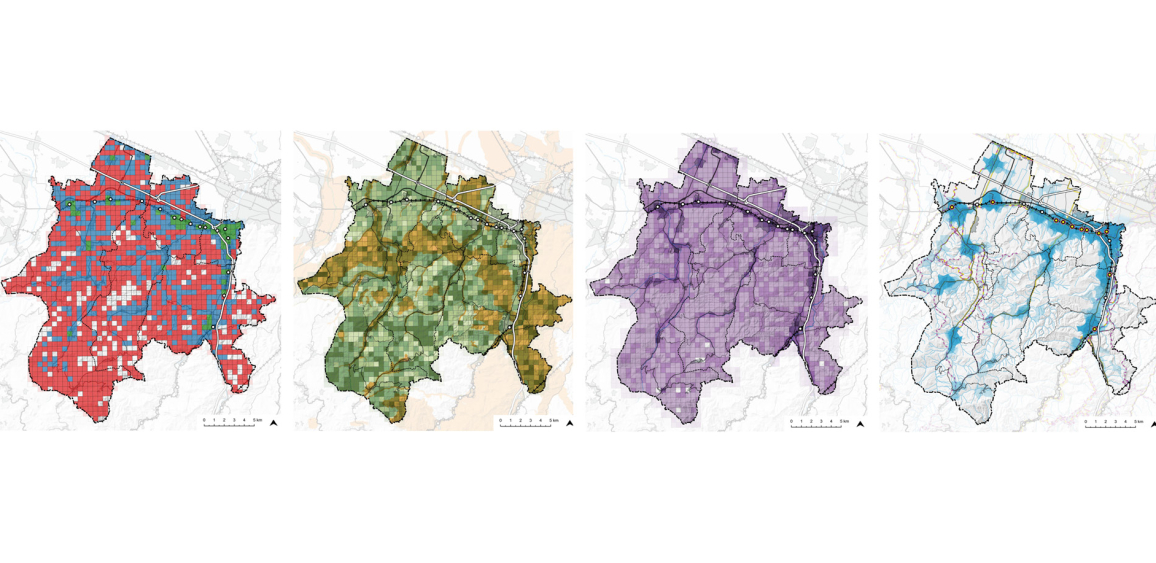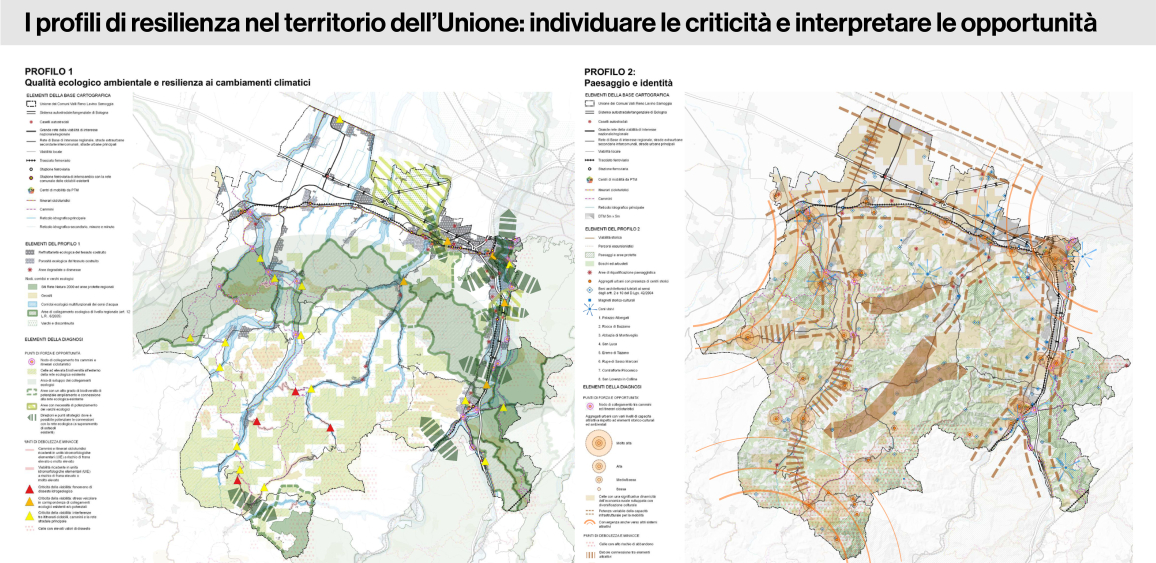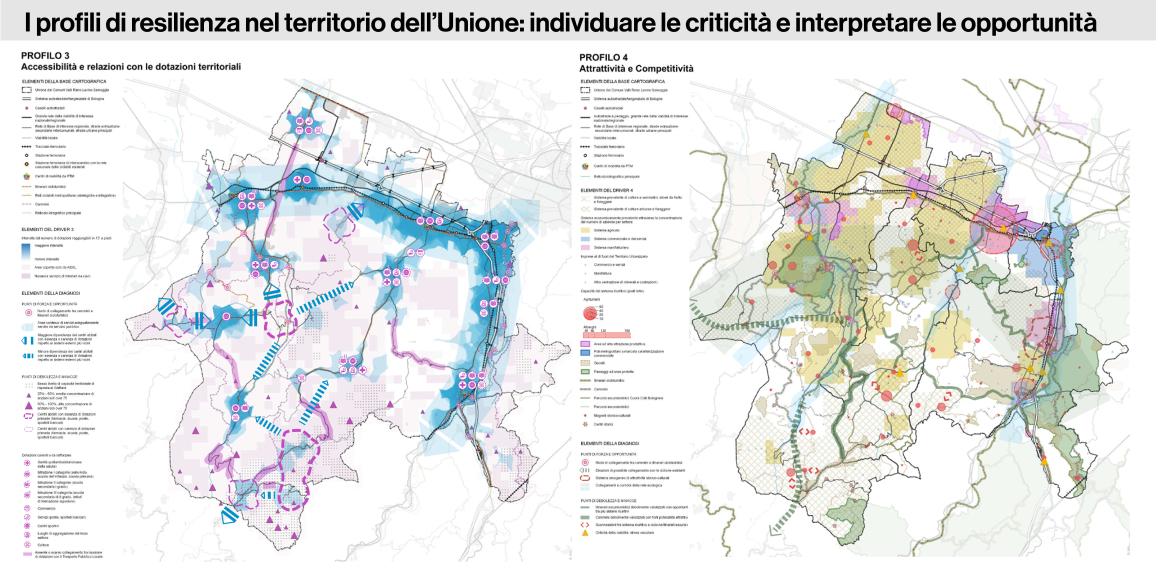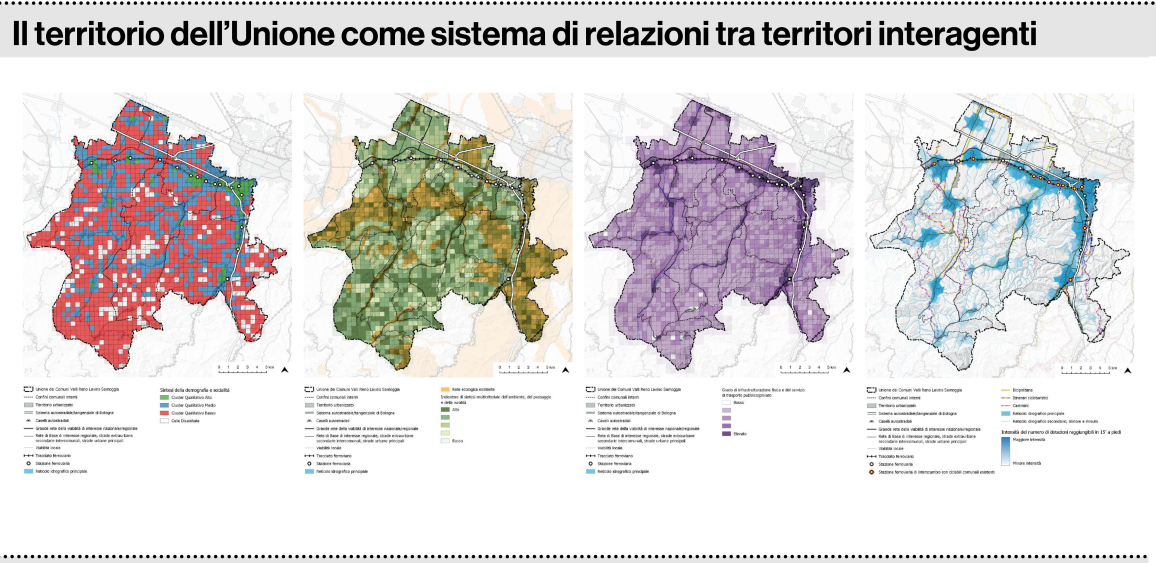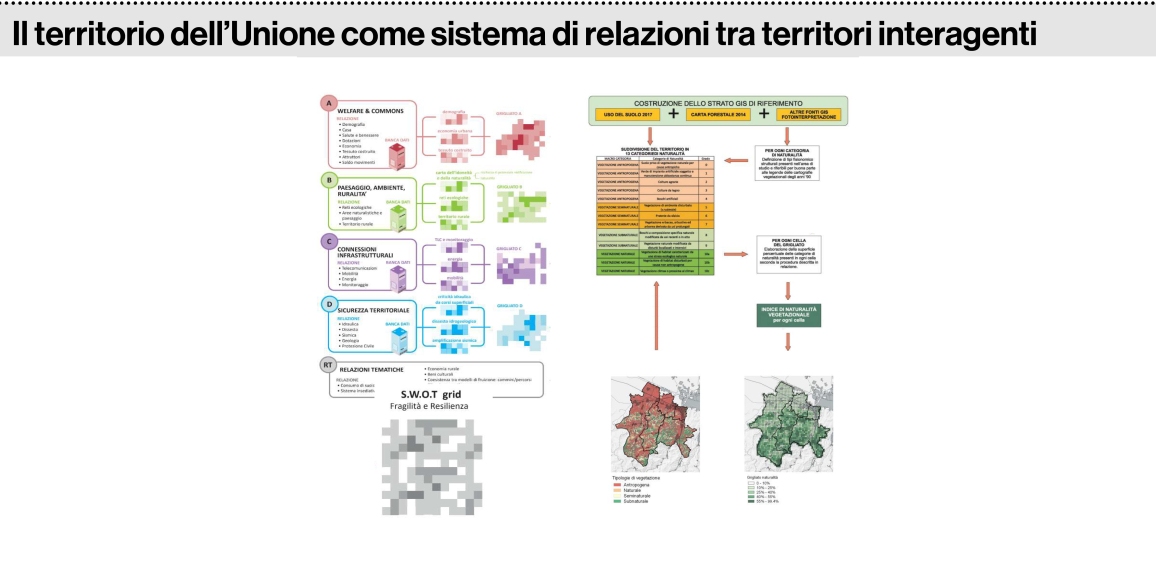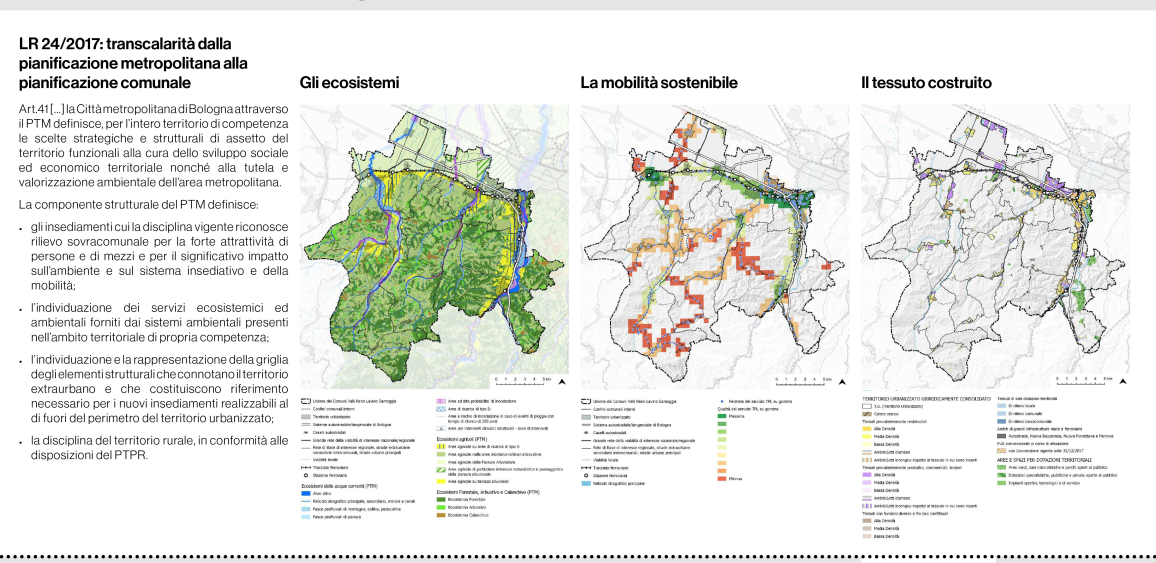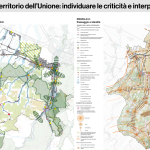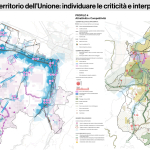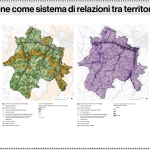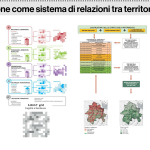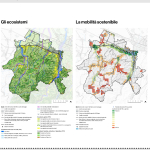The Intercommunal Plan
Sustainability of development, innovation and quality of life are key points around which the five municipalities have decided to articulate in a unified way a path that, enhancing the specificities and resources of each municipality, can direct towards harmonious growth, inclusive and environmentally sustainable, within a shared vision of territory. A conscious context of own resources, able to dialogue with the outside world – in particular towards the Metropolitan City – and to strengthen internal integration and cooperation networks, in the awareness that the different issues posed by the contemporary transition can be answered only by overcoming the boundaries of individual municipalities and contributing to the formation of a shared vision of sustainable development at the scale of the vast territory.
LR 24/2017: transcalarità from the metropolitan planning to the communal planning
Art.41 […] the Metropolitan City of Bologna through the PTM defines, for the entire territory of competence the strategic and structural choices of spatial planning functional to the care of social and economic territorial development as well as the protection and environmental enhancement of the metropolitan area. The structural component of PTM defines:
- the settlements to which the current regulation recognizes supra-municipal importance for the high attractiveness of people and means and for the significant impact on the environment and on the settlement system and mobility;
- identification of the ecosystem and environmental services provided by the environmental systems within the territorial scope of its competence;
- the identification and representation of the grid of the structural elements that characterize the extra-urban territory and that are necessary reference for new settlements achievable outside the perimeter of the urbanized territory;
- the regulation of the rural territory, in accordance with the provisions of the PTPR.
Italiano
